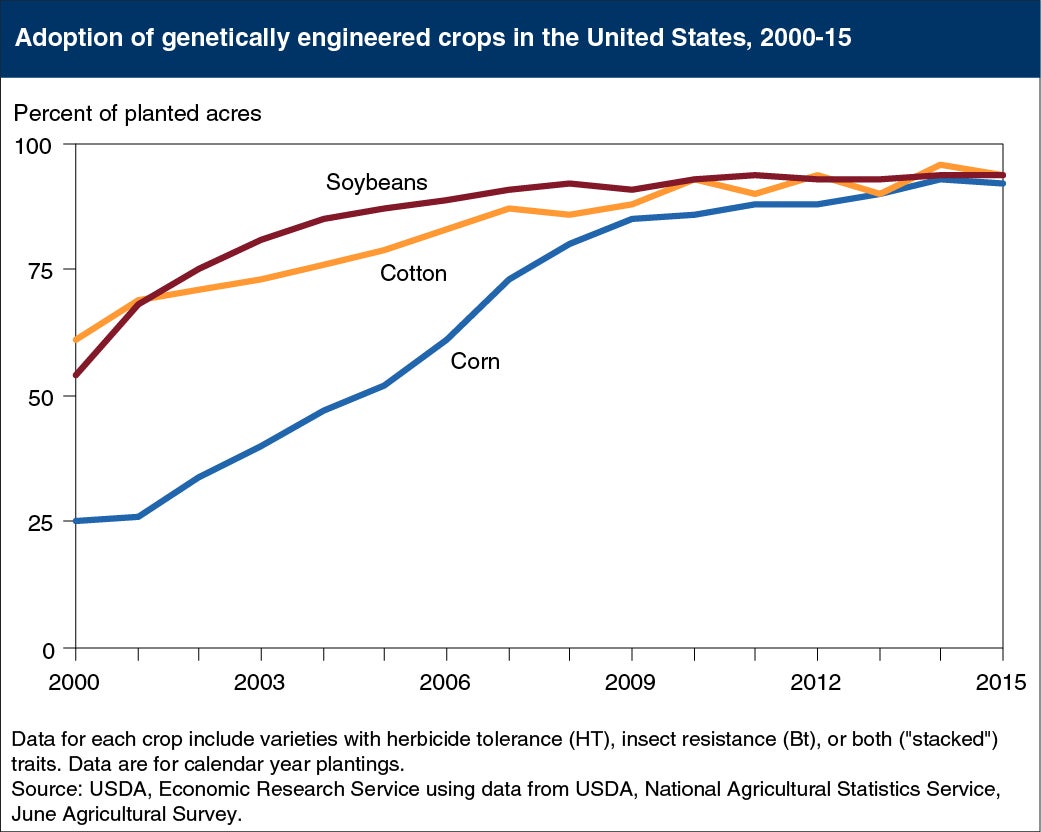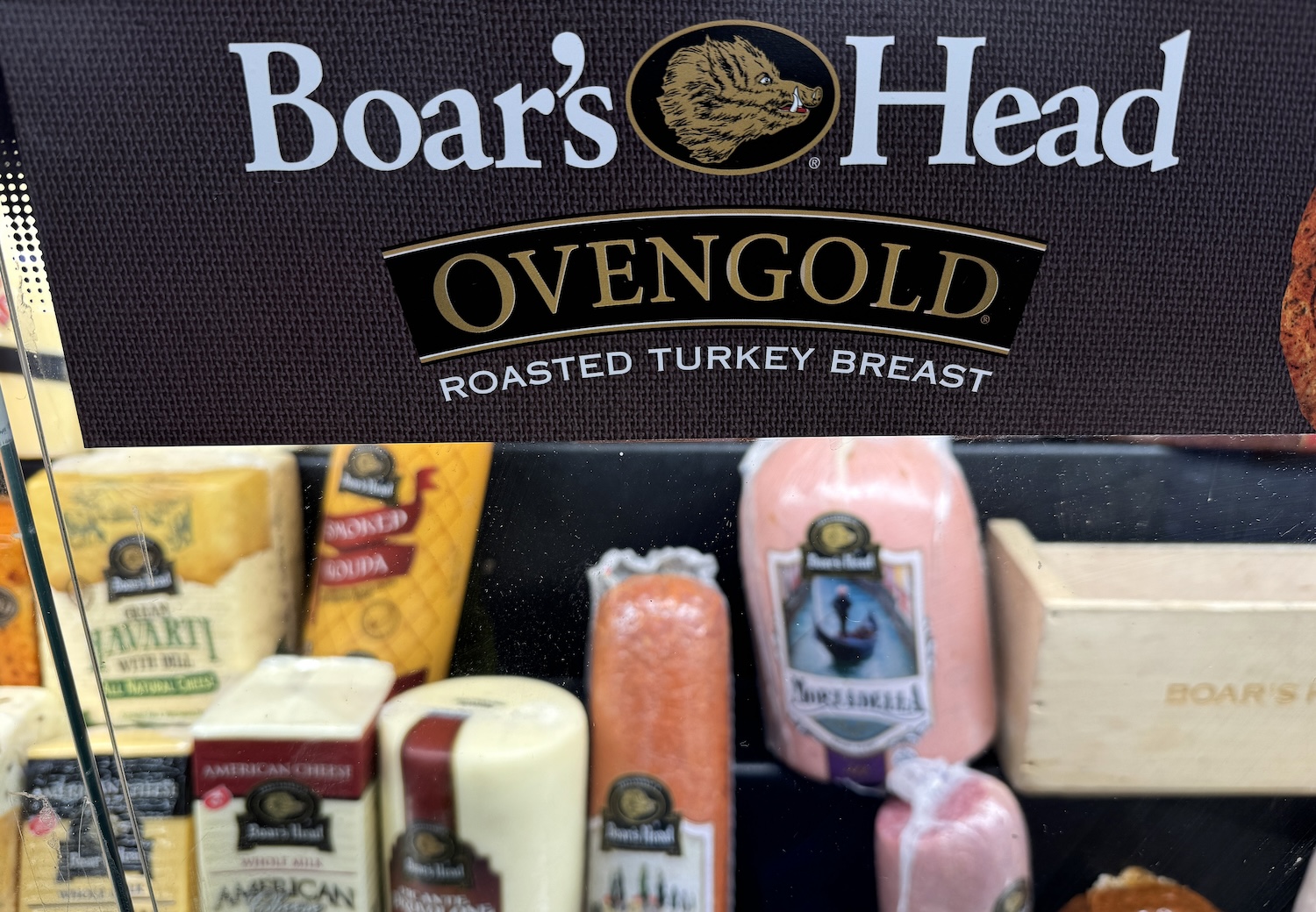Worried that genetically-modified foods could be quietly, secretly, making their furtive way towards your plate even as we speak? Don’t be—you’ve already been eating them for a long time now.
A lot of the consternation over GMOs—particularly amongst those calling for wide-spread labeling—has centered around the idea that GMOs are something brand new and unknown. But the truth is that for a lot of crops GMO isn’t the exception. Instead, it’s long been the rule.
The USDA has been keeping updated data on the percentage of which top U.S. crops are genetically-engineered—including the number one farm crop, corn. For the last five years, all but two to three percent of American corn is genetically-engineered for insect resistance or herbicide tolerance (or both, as in almost ninety percent of all corn).
 But it’s not just recently—for corn, cotton, and soy, genetic-engineering has been heavily in play for fifteen years at least—and genetically-engineered insect resistance in corn becomes an even more interesting example if you look further back than the fifteen years you see on the chart.
But it’s not just recently—for corn, cotton, and soy, genetic-engineering has been heavily in play for fifteen years at least—and genetically-engineered insect resistance in corn becomes an even more interesting example if you look further back than the fifteen years you see on the chart.
Most of the insect-resistant corn—called Bt corn—in the U.S. comes from genes from a bacteria found in soil called Bacillus thuringiensis. But decades before Bt-corn began to show up in U.S. farms about twenty years ago, Bacillus thuringiensis was in heavy use as a spray-on pesticide. In fact, it still is used today, in organic farming.
Part of the confusion is simply around the term GMO. What does GMO mean? Is Bacillus thuringiensis usage a better example of the rise of organic farming or GMO farming? Is cheese, by necessity, a GMO? The answer to all these questions depends on who you’re asking. GMO has no set definition.
What is clear is that for a lot of people it’s come to stand for something—some murky, mutant future food, sprung up from a test tube rather than the ground in a dystopian near-future. The truth is that these crops are not from some far-flung future—grim or not. They’re the crops of our present, and, indeed, our past.
Illustration by Tara Jacoby














